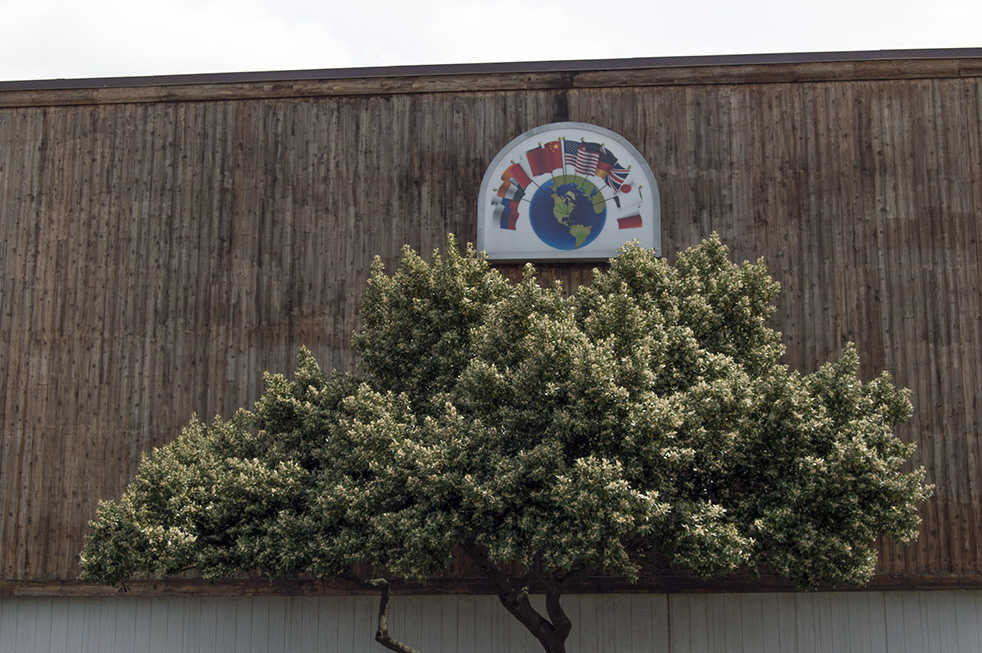Situated in the rather secluded Atlanta suburb of Scottdale is the massive building that contains Our World Market (OWM), formerly branded as Your Dekalb Farmers Market.
The grocery is quite large; it is housed in a space that very much resembles a warehouse. A wide variety of produce, meat, fish, dairy, grain and nearly any other food that can be thought of can be tracked down somewhere within the store. OWM has its own cafeteria as well — shoppers park their carts outside its entrance within the store while they dine on various offerings. Also included within the enormous market space is a floral shop as well as a cafe with hot coffee and pastries.
But especially unique to OWM is the diversity one encounters immediately upon entry. It is not difficult to meet people from all different backgrounds and walks of life shopping together at any given hour of any day of the week. And the position that OWM occupies in relation to Atlanta’s immigrant communities could be likened to that of a keystone, both historically and in the present.
Tore C. Olsson, writing for Southern Cultures in 2007, described the ethnic shift in Atlanta’s demographics towards the end of the 20th century.
“While statistical figures can offer only a slice of reality, a comparative analysis of the 1980 and 2000 censuses is solid proof that Atlanta has undergone tremendous change,” Olsson wrote. “DeKalb County attracted thousands of immigrants during these two decades, due to the availability of cheap housing and access to public transportation. While the county grew 8 percent in total population between 1980 and 2000, the number of non-white and non-black residents grew by 747 percent, from 1.5 to nearly 10 percent of the population.”
Robert Blazer founded OWM (then Your Dekalb Farmers Market) in 1977 as a more conventional marketplace. Olsson goes on to explain how, at that time in Atlanta, foods that were not Euro-American would certainly be thought of as off the beaten path to most of the cities’ inhabitants.
“Glancing through the 1977 Atlanta Yellow Pages reveals a city that had yet to be transformed by the proliferation of ethnic food: only ninety-two out of approximately fifteen hundred restaurants could be classified as non-Euro-American,” Olsson wrote. “With forty-six Chinese, fourteen Japanese, eighteen Mexican, and only two Thai restaurants, Atlanta was a city still characterized by ‘all-American’ food such as that served at the Varsity and
Chick-fil-A …”
As competition with large chain grocery corporations like Kroger placed pressure on smaller local operations, the decision was made that OWM would serve to supplement traditional foods with a variety of international products so as to make distinct their offerings.
According to Olsson, Blazer’s OWM was a trailblazer in this regard in that the market was one of the first groceries to add such global choices.
“The non-white and non-black population of DeKalb County nearly tripled in the 1980s, and Asian and Hispanic immigrants flocked to the market as Blazer’s business began catering to this new demographic influx,” Olsson wrote. “Connie Siu Guinn, the daughter of two Asian immigrant entrepreneurs who opened Golden China, one of the first Chinese restaurants in nearby Snellville, remembers shopping at the Market throughout the eighties: ‘Going to the market was a ritual. Every Saturday my family would go. My mom would buy the produce and the products she missed so much, and my father would pick up wholesale items for the restaurant.’ In providing the raw materials for ethnic food vendors, the Market facilitated the operation of dozens of restaurants like the Siu Family’s.”
Olsson argues that OWM has played a key role in allowing for the proliferation of ethnic restaurants in Atlanta. He cites a figure of 92 such establishments in 1977, comparing it to estimates in 2005 of 579, “with nearly 200 Chinese, 162 Mexican, and more than 50 Thai restaurants.”
In 2014, work on an expansion effort of OWM began. Yet, in mid-2016, market officials told Curbed Atlanta that the project was still in the planning stages. Some estimates of the plans would have the new store become the largest grocery store in America.
